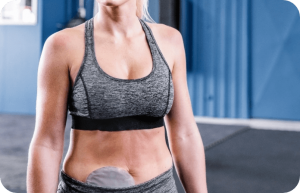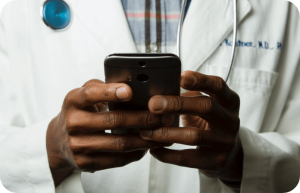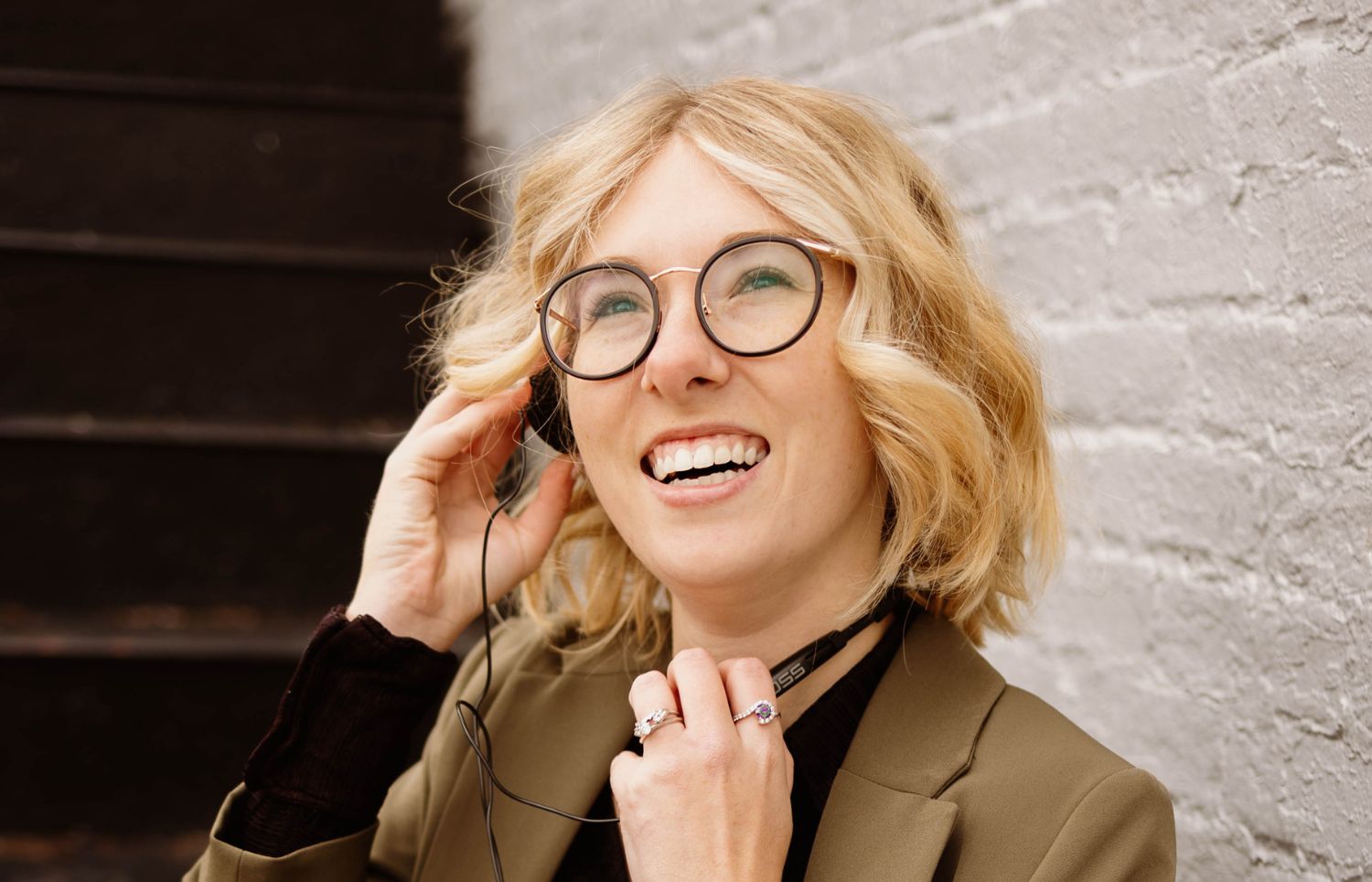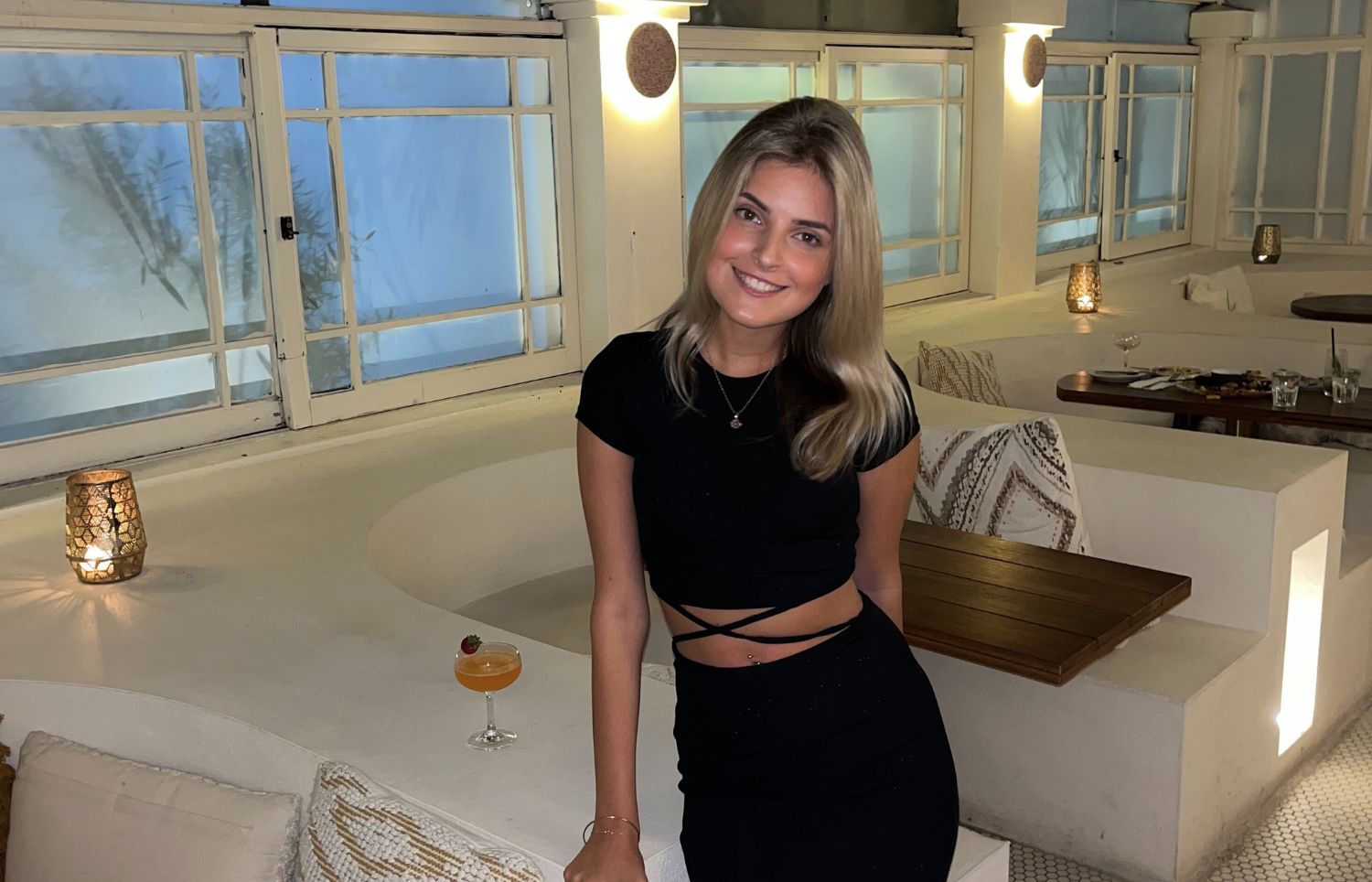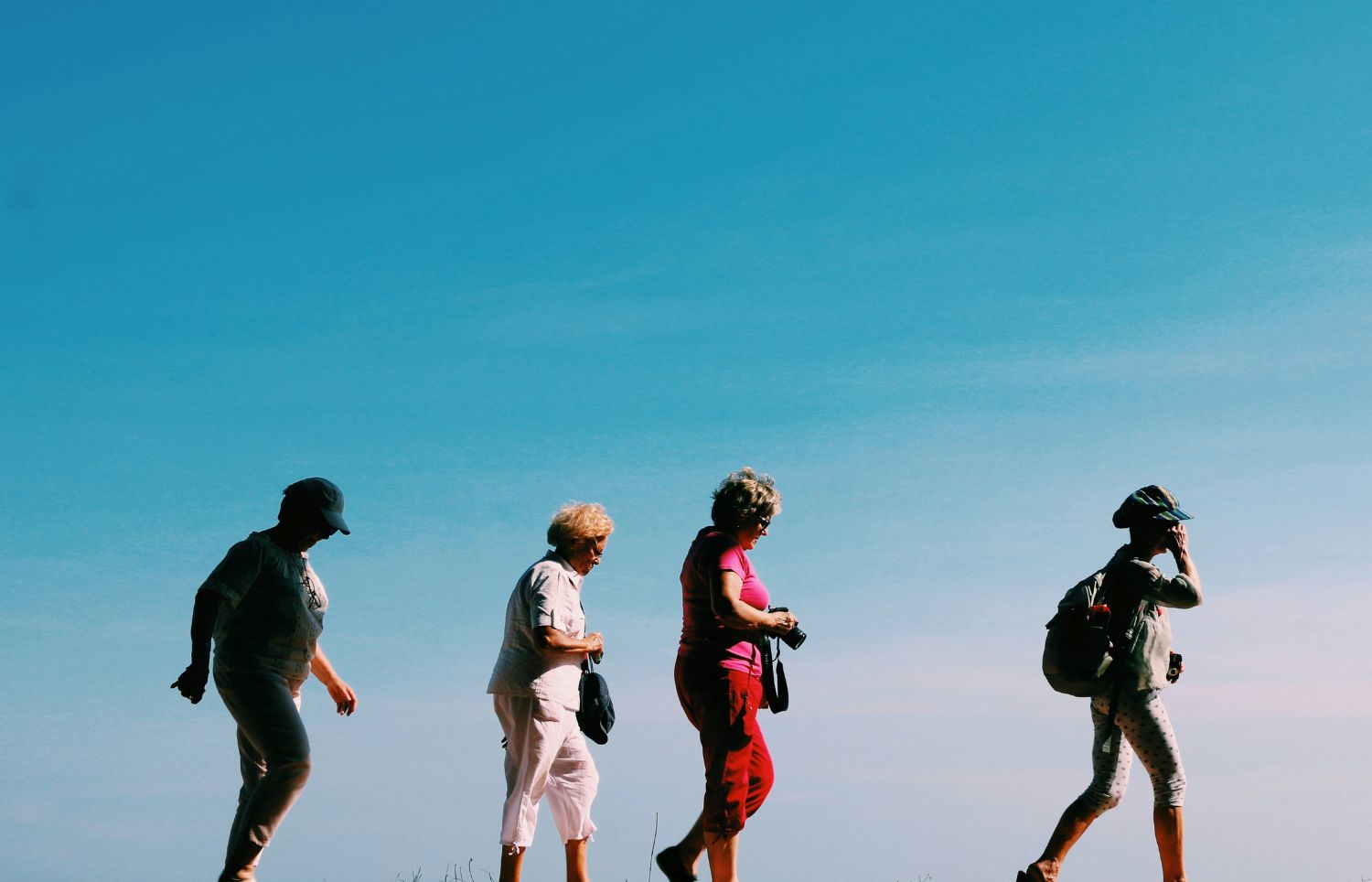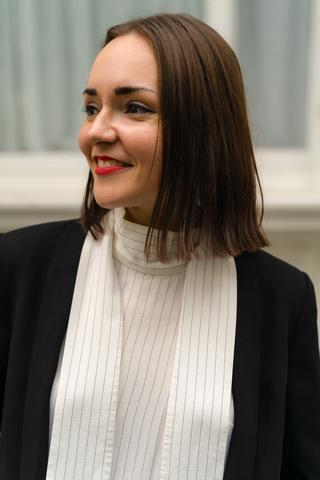
Fashion designer, Victoria Jenkins tells us about how her own health issues and how a chance meeting with another patient in hospital led to her developing her own brand of adaptive clothing designed to be comfortable, timeless and provide dignity to those with disabilities and/or invisible illnesses.
Victoria’s adaptive range include clothing with additional concealed zips/openings or adapted proportions for those needing easy access to stomas, catheters, lines or who use a wheelchair. After a whirlwind few months Unhidden are getting to launch their first pop up shop in Central London, this May.
Victoria, thanks for talking to the Bladder and Bowel Community…
Can you tell us a little about your background in fashion design? Were you always interested in the arts, fashion and design growing up?
Definitely- I think a lovely, young five-year-old me even said to my mum “I’m going to be a dancer or a designer”. I broke my ankle aged 15 though so that put an end to my dance career – lucky me I had back up plans! I did art at A-level (it didn’t go too well but that’s a story for another time – suffice to say kids, your teacher doesn’t always know best!) I did an art foundation course and then went on to study fashion design at Istituto Marangoni London.
We read that you were very successful after graduating and worked with many high street chains but you felt your health started to hold you back and that is what led to you deciding to go freelance. Can you tell us about your health journey?
I suppose looking back I was but it all takes time and as is often said, a LOT of hard work, often going above and beyond for very little pay. It’s not a kind industry.
I think I have always had a bit of a temperamental stomach, but in my early 20’s it was causing a lot of nausea, pain and right before my first big medical intervention a lot of weight loss which didn’t help when working very intense hours. Doctors had been dismissive of my symptoms so it wasn’t until an undiagnosed ulcer burst in my stomach in 2012 that I began to receive medical treatment (in fact life saving surgery when that happened) but rather than get better, I had other conditions diagnosed and other parts of me removed or re-wired. UCLH feels like my second home!
You mentioned that it was seeing the struggles of another patient going through ovarian cancer, having a stoma and central line that sparked the idea for your adaptive clothing range. How did you go about developing your range? Do you have a team who help you with your ideas?
I started first with what would I need a garment to do if had xyz condition – I have friends and some family friends that have a number of conditions so that helped as well as my own lived experience, then it was a case of asking strangers on the internet, reading everything I could about what existed and what was good/ bad about it as well as listening when people said really small details that they needed like lightweight seams, fabric choices, zip pulls. I guess the world is my ‘team’ but all the design work is done by me only (for now). I definitely soundboard with people but using my own career as a backdrop in garment fitting means I can answer a lot of the questions myself.
How does your clothing range help those with an impairment or disability?
It depends on the design, although I am trying to make more and more universal designs (that work for every single body). I have done my best with the small initial pieces to resolve as many problems for as many conditions as I can within one garment, so that they are ‘universally’ designed.
The seated trousers are quite specific for wheelchair users (but pretty comfy if you happen to be sat down a lot) so they have a longer back rise, the excess removed from the front of the hip and the back of the knee, no pockets on the bottom and a longer leg length. All the trousers are meant to be easy to pull on and have lycra in them, as well as elastic in the back waistband for comfort. There are zips in the side seams and the leg hem- I am working on specialised zip pulls but of course they come at a cost so that is a future hope.

The womens trousers also have an adjustable wrap at the front to allow for bloating- and all of them work for IBD, IBS and stoma people (or even as maternity wear!) The shirts can be finished with velcro, poppers or magnets depending on your dexterity needs, and they have openings in the sleeves to allow access to hickman and picc lines for anyone undergoing radiotherapy or chemotherapy or who just receives medicines in that way.
Then there are tops that are just easy to pull on that also have concealed zips to allow access to chest ports without lifting up/ removing your clothing – dignity is at the heart of all these designs as well.
We love how your pieces are classically shaped and could be dressed down or worn for work, do you have any plans to add to your range?
Absolutely! I could easily draw out 50 designs and begin to include outerwear, lingerie, sportswear, kids-wear and accessories but as a one woman startup, with little funding, for now I am restricted by what we can afford to develop. But as soon as I am able, I want to do it all. I believe we should have a choice, and I have been designing and redesigning in my head for three years now; we just had to launch with what would help as many people as easily as possible initially. It was really hard to narrow it down to what we have.
Tell us about your pop up shop opening on Oxford Street on 20th May? What made you decide to venture onto the High Street?
I am so so so excited about it! We’ll be the first adaptive brand ever sold on London’s High Street, which shouldn’t be a thing in 2021 but here we are. I have been a subscriber of Enterprise Nation for a while and the day that email popped in I thought it would be so wonderful to meet some of my customers in real life, talk to them, show them what I have done and what I want to do and just show everyone else that small doesn’t mean less valuable and that actually adaptive and inclusive design deserves the same space.
Why do you think that we don’t see many clothing ranges specifically for those with disabilities or impairments?
Like so much when it comes to disability, we are the last taboo, the last considered group when people talk of inclusion. We have been segregated and therefore brands don’t realise the size of the population. Globally there are 1 billion of us, 14.1 million in the UK and with an ageing population the non disabled could actually be classed as the not-yet-disabled (!) but people don’t want to or don’t ‘see’ us and therefore don’t consider us. I am no longer accepting that from fashion brands though because they know to use the word inclusion they have to show people with disabilities, so they’ll on occasion hire someone as a model but they don’t then go the next step of designing for them. America and Australia are far further ahead on this than the UK sadly.
Would you like to see your clothing range sold by high street retailers?
Absolutely. I am more than happy to work with existing brands on adaptive ranges because that is the real inclusion – people with disabilities don’t want to shop at one special shop, they want to shop in the SAME PLACES that everyone else does, like their friends and family do. No one wants to be ‘othered’. That’s why my adaptations are mostly concealed, so that anyone, including the non disabled population, can wear these designs and support universal and ethical fashion.
What are your future plans for yourself and Unhidden?
For me personally, I’d like to be able to have a secure financial future, however that looks. To be able to pay back the people who have supported me over the years would be wonderful. To maybe work a little less and be able to enjoy rest time and take better care of myself than I am able to now. I want to continue to champion other disabled voices and amplify those for whom I cannot speak. I want to step aside in Unhiddens’ story and ultimately tell others’ stories.
For Unhidden, I would like to have a global network of both concessions, collaborations but finally independent stores staffed with medically trained personnel, gloriously luxurious changing rooms fully kitted out with elegant winches and hoists and be a place people can come to feel looked after, special, themselves.
Victoria’s adaptive wear range at Unhidden is available to purchase online.
If you have a bladder or bowel condition and you would like to share your story with the community you can contact us by email [email protected], via Facebook or Twitter.


